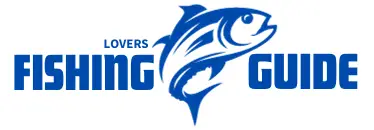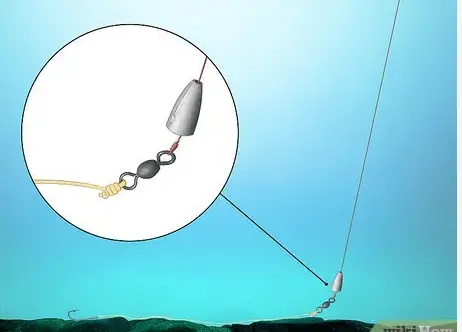To put weight on fishing line, attach it about 12-18 inches above the hook or lure. Fishing is a popular activity enjoyed by many enthusiasts.
Whether you are a beginner or an experienced angler, utilizing the right techniques can greatly enhance your chances of success. One crucial aspect of fishing is the placement of weight on the fishing line. This strategically placed weight helps to sink your bait or lure, making it more attractive to fish.
However, knowing exactly where to put weight on the fishing line is important for optimal results. We will explore the best placement for weight on the fishing line and provide some tips to improve your fishing experience. So, let’s dive in and uncover the secrets to successful weight placement in fishing.
Importance Of Weight Placement
Placing weight on a fishing line may seem like a simple task, but its placement is crucial for successful fishing. The right positioning of weight can directly impact the depth at which your bait or lure travels, the natural movement of your presentation, and your ability to feel bites. Understanding the importance of weight placement can significantly improve your chances of catching fish and maximize your efficiency on the water.
Finding The Right Balance
When determining where to place weight on your fishing line, finding the right balance is essential. Achieving the ideal balance means ensuring that the weight does not disrupt the natural presentation of your bait or lure while still allowing it to reach the desired depth. This can be achieved through careful consideration and experimentation.
Factors To Consider
- Water Depth: The depth of the water you are fishing in will determine where the weight should be placed to achieve the desired presentation depth.
- Current Speed: Faster currents may require placing weight closer to the bait or lure to prevent it from drifting too quickly.
- Bait or Lure Type: Different baits and lures may require weight placement adjustments to maintain their natural movements.
- Targeted Fish Species: Understanding the behavior of the fish species you are targeting can help in determining the optimal weight placement.
6 Common Weight Placement Options
When it comes to fishing, choosing the right weight placement on your fishing line can make all the difference in your success. The location of the weight affects how your bait or lure moves through the water, enticing fish to strike. In this post, we’ll explore six popular weight placement options: the Carolina Rig, Texas Rig, Drop Shot Rig, Punch Rig, Split Shot Rig, and Free-Lining.
1. Carolina Rig
The Carolina Rig is a versatile and effective technique that allows you to present your bait in a natural manner, while also adding some weight for casting distance and depth. This rig is popular for catching largemouth bass, as well as other species like catfish and walleye.
To set up a Carolina Rig, you’ll need an egg sinker or bullet weight, a bead, a swivel, a leader line, and a hook. The weight is placed above the swivel, allowing the bait to move freely while the weight stays on the bottom. This setup is great for dragging your bait along the bottom or through vegetation.
2. Texas Rig
The Texas Rig is a tried-and-true method for fishing in heavy cover, especially when targeting bass. This weedless setup allows you to fish in areas with thick vegetation or structure without getting snagged.
With the Texas Rig, the weight is placed directly above the hook, giving your bait a natural presentation as it falls through the water column. This setup is excellent for flipping or pitching into cover, as it allows your bait to dive into the strike zone quickly.
3. Drop Shot Rig
If finesse fishing is your style, then the Drop Shot Rig should be in your arsenal. This rig is extremely effective for targeting finicky bass, panfish, and even saltwater species like flounder.
The Drop Shot Rig consists of a thin-wire hook tied to the end of the line, with the weight attached a few inches below. The weight is typically a tear-drop or cylinder shape, and it rests on the bottom while the bait hovers just above it. This setup creates a tantalizing presentation that is hard for fish to resist.
4. Punch Rig
When targeting fish hiding in heavy cover like thick mats of vegetation, the Punch Rig is a go-to technique. This rig allows you to penetrate the cover and get your bait in front of the fish.
The Punch Rig utilizes a heavy tungsten weight, often shaped like a bullet or a cylinder, threaded onto the line above the hook. The weight’s design allows it to slip through cover easily, while the bait remains hidden. By adding a skirt or soft plastic, you can create an enticing lure that triggers aggressive strikes.
5. Split Shot Rig
If you’re looking for a simple and effective way to add weight to your line without compromising the action of your lure or bait, the Split Shot Rig is a great option. This rig is particularly popular among trout anglers but can be used for various freshwater species.
Using a small split shot weight, pinch it onto the line about a foot or so above the hook. By adjusting the placement of the weight, you can control the depth at which your bait or lure travels. This subtle addition of weight can make a big difference when targeting fish in streams, rivers, or lakes.
6. Free-lining
When you want to present your bait or lure in the most natural way possible, free-lining is the way to go. This technique involves no additional weight and is often used when targeting surface-feeding or highly skittish fish.
With free-lining, you simply tie your hook directly to the line and cast out. This setup allows for a delicate presentation that mimics a live or injured baitfish swimming freely. It’s important to note that free-lining works best in calm conditions, as any wind or current can make it difficult to control your line and presentation.
Matching Weight Placement To Fishing Conditions
When it comes to fishing, understanding where to place bobber on your fishing line can significantly affect your chances of success. By matching weight placement to fishing conditions, you can optimize your setup for different scenarios. Let’s delve into the key factors to consider when determining the ideal placement of weight on your fishing line.
Water Depth
Water depth plays a crucial role in determining the ideal placement of weight on your fishing line. In shallow waters, placing weight closer to the bait can help keep it in the strike zone. Conversely, in deeper waters, heavier weights positioned further up the line can effectively reach the desired depth. Additionally, when dealing with varying depths, using adjustable weights or employing a sliding weight setup can be advantageous.
Bottom Structure
The type of bottom structure in the area you are fishing also influences weight placement. When fishing in areas with rocky or uneven bottoms, using a Carolina rig with the weight positioned above the hook can prevent snags and effectively navigate the structure. In contrast, when targeting fish near sand or mud bottoms, placing the weight directly on the terminal tackle can increase the chances of enticing a strike.
Vegetation And Cover
Vegetation and cover provide both opportunities and challenges for anglers. When fishing in areas with dense vegetation, employing a Texas rig or using weedless weights can prevent snagging and ensure your bait navigates the cover effectively. On the other hand, when fishing around minimal vegetation, positioning the weight closer to the bait can enhance the presentation and visibility of your offering.
Fish Activity Level
The activity level of the fish you are targeting should also dictate the placement of weight on your fishing line. When targeting actively feeding fish, keeping the weight closer to the bait can help maintain a natural presentation and entice strikes. In contrast, when fish are lethargic or inactive, positioning the weight further up the line can help get your bait in front of them more effectively.
Experimentation And Personal Preference
When it comes to fishing, where to put weight on the fishing line is a matter of experimentation and personal preference. Anglers may choose to add weight near the hook or further up the line depending on factors such as water conditions and target fish species.
It’s important to try different placements to find what works best for you.
When it comes to fishing, there is no one-size-fits-all answer to where you should put weight on your fishing line. The best approach is to experiment and find what works best for you. Of course, personal preference also plays a significant role in determining the placement of weight. By trying different setups and considering your fishing style and goals, you can optimize your fishing experience and increase your chances of success.
Trying Different Setups
Trying different setups is a crucial aspect of finding the optimal placement of weight on your fishing line. This involves adjusting the position of weight along the line and testing how it affects your fishing technique and results. Keep in mind that your target fish species, water conditions, and fishing location may influence the best placement of weight.
Here are some setups you can experiment with:
Split Shots: Placing weight above the hook to provide better control over the sinking speed of your bait.
Carolina Rig: Separating the weight from the hook using a swivel or a bead, allowing your bait to move more naturally.
Drop Shot: Attaching weight at the end of your line and suspending your bait above it, enhancing the visibility and action of your bait.
Remember, there is no definitive answer as to which setup will work best for you. It’s all about experimenting and finding what works well with your fishing style and the conditions you are facing.
Considering Fishing Style And Goals
When determining where to put weight on your fishing line, it’s essential to consider your fishing style and goals. This means understanding the techniques and methods you prefer to use and the type of fish you are targeting.
If you enjoy finesse fishing for bass, for example, you might opt for a drop shot setup with weight below the hook to maintain a suspended presentation. On the other hand, if you are targeting bottom-dwelling species, placing weight close to the bait using a Carolina rig can keep your bait within their striking zone.
Ultimately, your fishing goals, such as catching larger fish or improving your casting distance, can also guide your decision on where to put weight on your fishing line. Experimenting with different setups and considering your fishing style and goals will ensure you find the best weight placement for your specific needs.
Conclusion
In sum, the placement of weights on the fishing line is crucial. By understanding the type of fishing and the water conditions, you can determine the best location for your weight. Experimenting with different placements and weights will ultimately help you find the most effective setup for your fishing endeavors.


